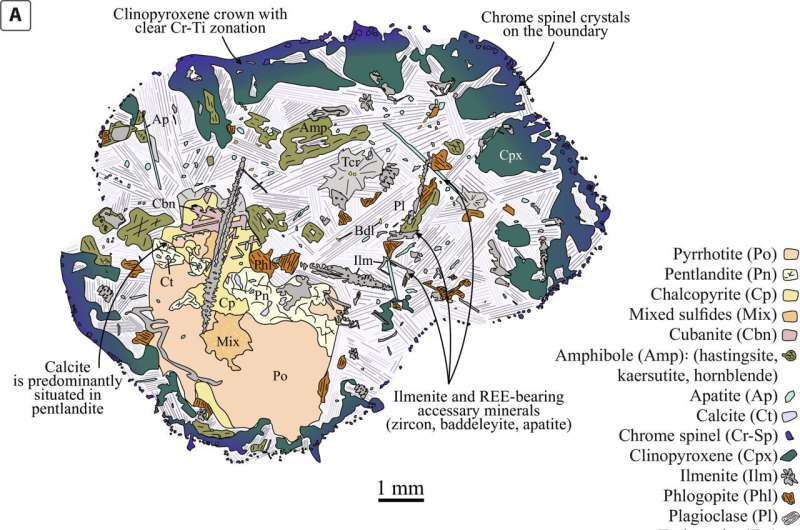
Researchers from The University of Western Australia have created an experiment to explain the volcanic processes needed to transport green metals from the Earth’s interior to its surface.
Dr. Maria Cherdantseva and Professor Marco Fiorentini, from UWA’s School of Earth Sciences, were co-authors of the study published in Science Advances.
“We reproduced the natural conditions that occur inside large volcanoes and found a secret ingredient must be added to magmas to enhance their potential to carry green metals,” Dr. Cherdantseva said.
Lead author Dr. Cherdantseva evoked the classic experiment of adding olive oil into a bowl of water and observing how the two liquids are unable to mix.
The study showed that in nature it is when a magmatic liquid known as carbonatite (oil) separates from magma (water) that green metals can be easily transported. Green metals display a strong physical attraction to carbonatite and tend to stick to it.
Due to the known low density of carbonatite, the carbonatite-metal pair would be notably lighter than the metal by itself, and even lighter than the surrounding magma.
“In essence, the carbonatite acts as a life jacket, preventing metals from drowning in the magma and facilitating their transport upwards,” Dr. Cherdantseva said.
“The carbonatite-metal pair is what we observe in the experiments and in nature.”
Previous research has tried to solve the puzzle of how metals such as nickel, platinum and copper, which are notably heavy and difficult to transport in magmas, make their way from the interiors of the planet to its surface.
“Mineral explorers can use this new knowledge to prioritize specific volcanoes in terms of the likelihood of green metals being present, thus maximizing the efficiency of the targeting process and minimizing the footprint on the environment,” Professor Fiorentini said.
“These results build on a body of knowledge on green metals, which are key resources essential for a sustainable, emission-free energy future.”
More information:
Maria Cherdantseva et al, Carbonated magmatic sulfide systems: Still or sparkling?, Science Advances (2024). DOI: 10.1126/sciadv.adl3127
Provided by
University of Western Australia
Citation:
From mantle to crust: Solving a green metal mystery (2024, June 24)
retrieved 27 June 2024
from https://phys.org/news/2024-06-mantle-crust-green-metal-mystery.html
This document is subject to copyright. Apart from any fair dealing for the purpose of private study or research, no
part may be reproduced without the written permission. The content is provided for information purposes only.



